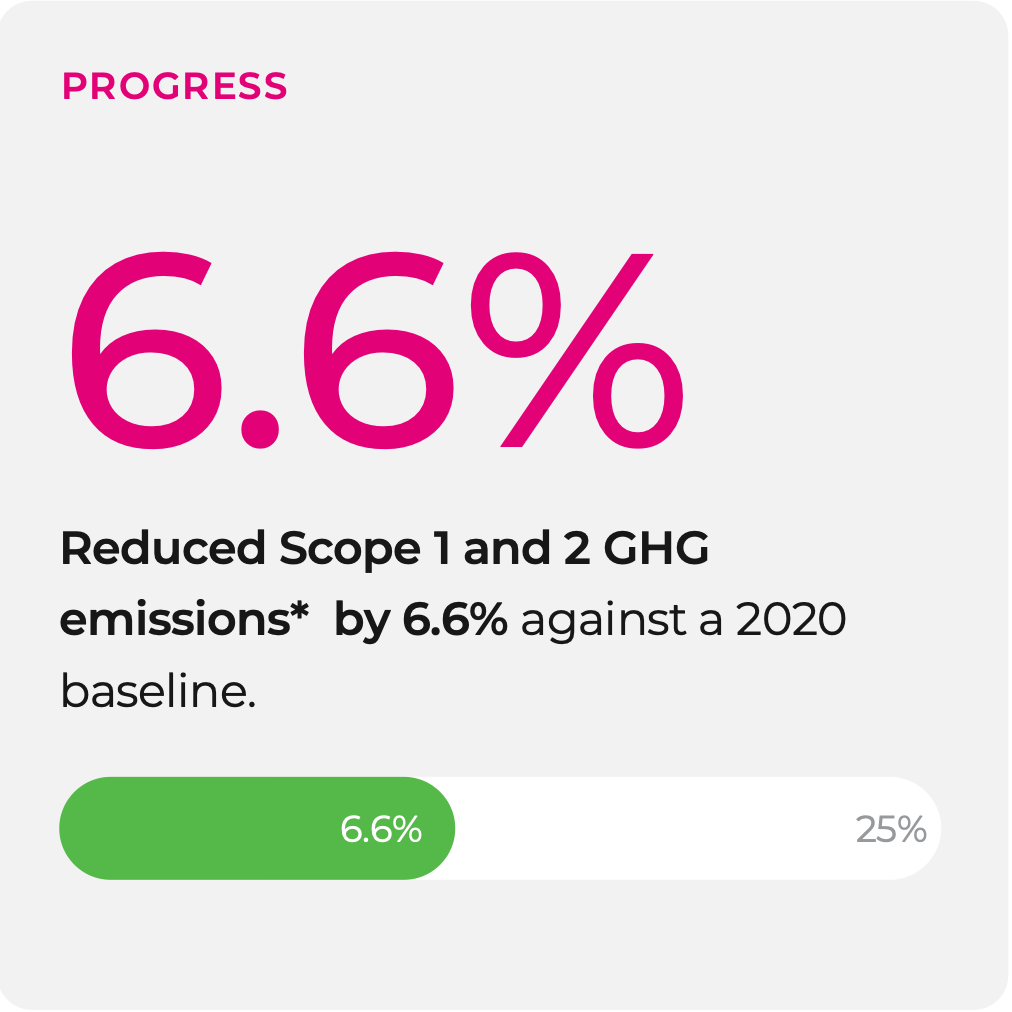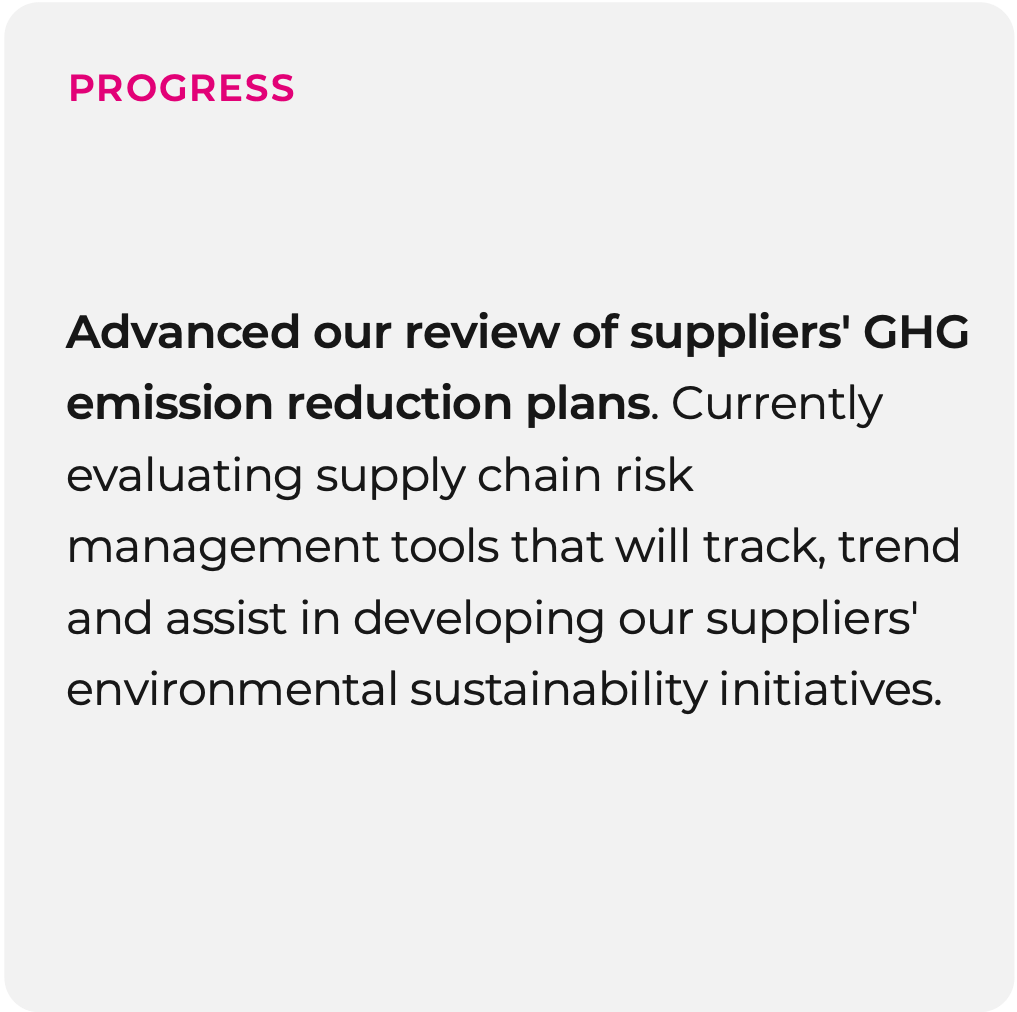Climate change
Climate change represents one of the greatest challenges for humankind. Emissions reductions, energy management and the transition to renewable and alternative power sources are key components of our environmental management strategy.
Our approach is focused on reducing our environmental impact and operating costs as well as mitigating risk associated with future regulatory requirements related to climate change.
We continually assess potential impacts of climate change on our business and support the goals of the Task Force on Climate-Related Financial Disclosure (TCFD). To learn more about how we are managing climate-related risks and opportunities, view our TCFD index.
Progress on goals
Support the transition to a low-carbon economy, with a long-term ambition to achieve net zero greenhouse gas (GHG) emissions in our operations and through our supply chain.
By 2025:
- Aim to reduce our Scope 1 and 2 GHG emissions by more than 25% from 2020 levels.

* Including biogenic emissions
- Aim to have at least 70% of our supplier spend devoted to suppliers that have GHG emissions reduction programs.

- Characterize and regularly update our Scope 3 GHG emissions to reflect our supply chain.

Greenhouse gas emissions
We have implemented our Environmental Management Standard, requiring responsible and efficient energy management and associated GHG emission reductions, at our six owned manufacturing sites.
We track our energy usage at our manufacturing sites quarterly and consolidate the results in our global environmental dashboard. The Environmental Sustainability Center of Excellence (CoE) is responsible for calculating GHG emissions associated with our site energy usage per the standards laid out in the Greenhouse Gas Protocol. Our five-year environmental sustainability plans also include goals for improving energy efficiency and reducing demand.
Learn more about our carbon footprint in our performance data tables in the ESG reporting center
Energy management
Energy conservation is a key component of our efforts to reduce our Scope 1 and 2 carbon footprint.
In addition to the implementation of our Environmental Management Standard at our six owned manufacturing sites, we also integrate energy management into our process for designing and constructing new facilities.
Our energy consumption is primarily due to running our production equipment and ventilation systems, heating and cooling our buildings, lighting and our on-site vehicle fleet.
Increasing our use of energy produced from renewable sources is a core part of our ESG strategy. In addition to seeking ways to increase the amount of renewable energy generated at our sites through new installations, we are seeking opportunities to purchase electricity from renewable sources.
Learn more about our total energy consumption and energy intensity in our performance data tables in the ESG reporting center as well as our virtual purchase power agreement in our stories
Learn more about our work on water management, waste management, and biodiversity